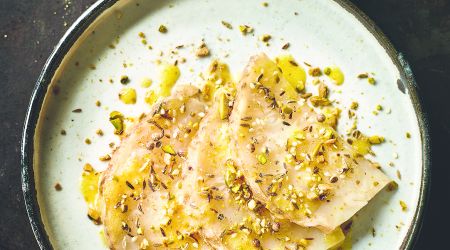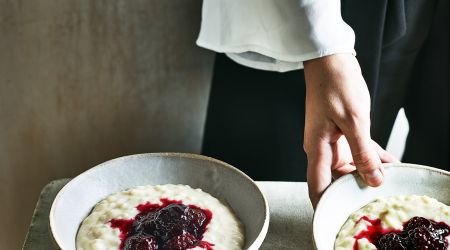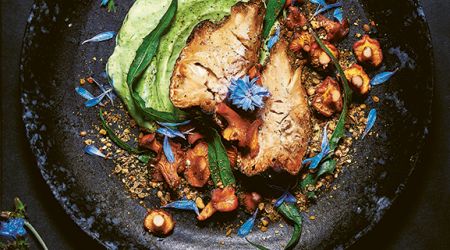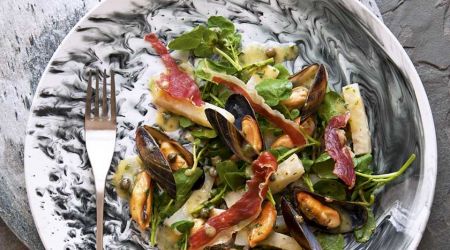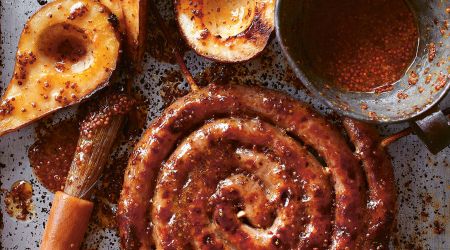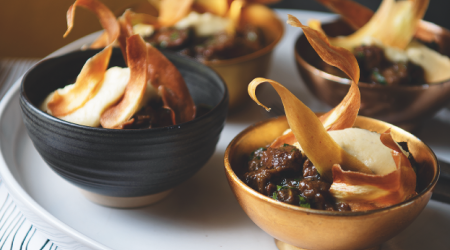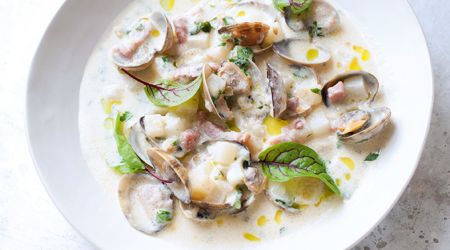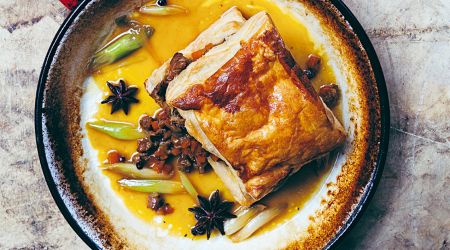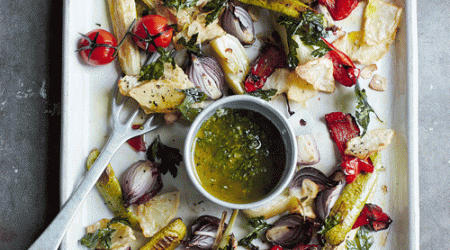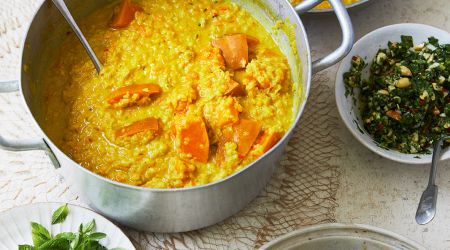Celeriac
With its delicately aromatic taste, ability to soak up other flavours and new easy-to-peel varieties this is no longer the poor cousin to the widely used celery, says Clarissa Hyman
Celeriac is never going to win any beauty prizes. With a shape like a battered football, prepossessing it is not. Little wonder many shoppers give it a wide berth. It singularly fails to bear any resemblance to its slender green cousin and has the sort of looks only a mother vegetable could love. Yet celery and celeriac are essentially the same plant, both descendants of wild celery.
Plant breeding and cultivation from the 17th century onwards, however, took them in different directions. Celery was destined to be sought after for crisply sweet stalks; celeriac for the large swollen base half-buried in the ground like a forgotten cannonball. Over the centuries, horticulturalists succeeded in turning a tiny root into a gnarled ball of intense but delicate celery flavour and fragrance, and in turn a virtual exclusion from the British shopping bag is only now being rectified.
The French have long known better. Celeriac remoulade is one of the great classic salad dishes across La Manche. The crunchy, mustardy slaw made with grated, blanched and dressed julienne shards strikes the right balance between creaminess and acidity – a distinguished partner to cold meats and sausages. You’d never know that this most elegant of hors d’oeuvres derives from such an ungainly start in life. Never ones to shirk a kitchen challenge, the French became skilled at hacking their way through the roots and thick exterior to avoid wasting good flesh.
Arguably, it was Elizabeth David in French Provincial Cooking who really brought celeriac to the attention of the British public. Newer, user-friendly varieties have come onto the market in recent years that are larger, smoother and much easier to peel.
If eating it part-cooked in a salad, add celery salt to the vinaigrette or take a tip from Tom Aikens and add capers, gherkins and parsley to a mix of mayonnaise, crème fraîche and grain mustard.
Hugh Fearnley-Whittingstall suggests adding a warming touch of orange zest to a velvety soup of celeriac and fennel. The earthy quality of the root and slightly nutty lavour is also enhanced by chestnuts, leek, apples and blue cheese. Deep-fried celeriac chips go well with mustard or garlic mayonnaise. Roast chunks alongside a joint, or boil and mash them with plenty of butter – like a grown-up swede – for purée to go with pheasant or turkey.
Modern vegetarian cooks have welcomed celeriac’s ability to soak up flavours, making it excellent for gratins, to oven roast or as a filling for pies – mixed with mushrooms (especially ceps), nuts, tomatoes or cheese. Dauphinoise made with celeriac and potato is a wonderful combination when baked in cream and topped with Gruyère.
Celeriac can also carry the pungency of fresh spices such as ginger, chilli, coriander and black pepper. Jamie Oliver has an easy recipe for smashed celeriac (somewhere between cubes and mash) with garlic, thyme, olive oil and a splash of stock. Another good use is with potato in rosti.
Celeriac love moisture and grow best in full sun, well-spaced in dark, rich clay soil. As they mature, remove the outer leaves as they fall to horizontal to expose the crowns and allow them to develop. Remove side shoots if they appear. Gardener Sarah Raven recommends not harvesting them until after a mild frost, but also warns that they won’t stand hard frost so shouldn’t be left too long in the ground. Recommended modern varieties include Monarch – smooth skinned with succulent flesh; Alabaster – high yielding with good resistance to running to seed or bolting; and Prinz with aromatic flesh and good resistance to leaf disease. Don’t throw away the leaves as they can be used in salads or dried for cooking.
The paler it is, the fresher celeriac will be, and the thick skin will keep the interior smelling pleasantly of aniseed for a long time until used. The smaller the bulb, the better. Larger specimens can go somewhat woolly in the centre. Once peeled, use the celeriac at once or it will oxidise. It won’t affect the taste but the grey-brown colour can look rather unappetising.
At their best between September and April, celeriac are fun to grow and to eat: just save them from the compost heap. They may not be pretty, but they deserve so much better.
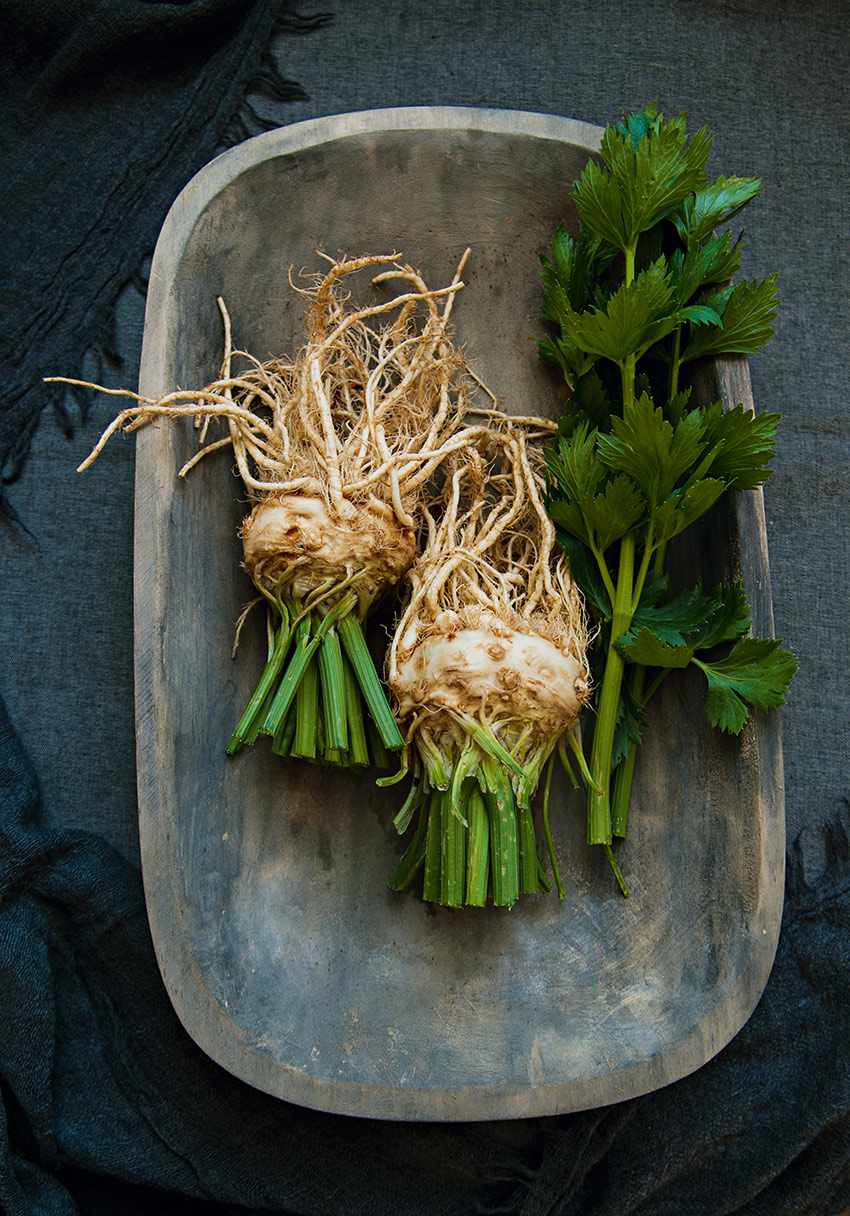
Recipes
Get Premium access to all the latest content online
Subscribe and view full print editions online... Subscribe


